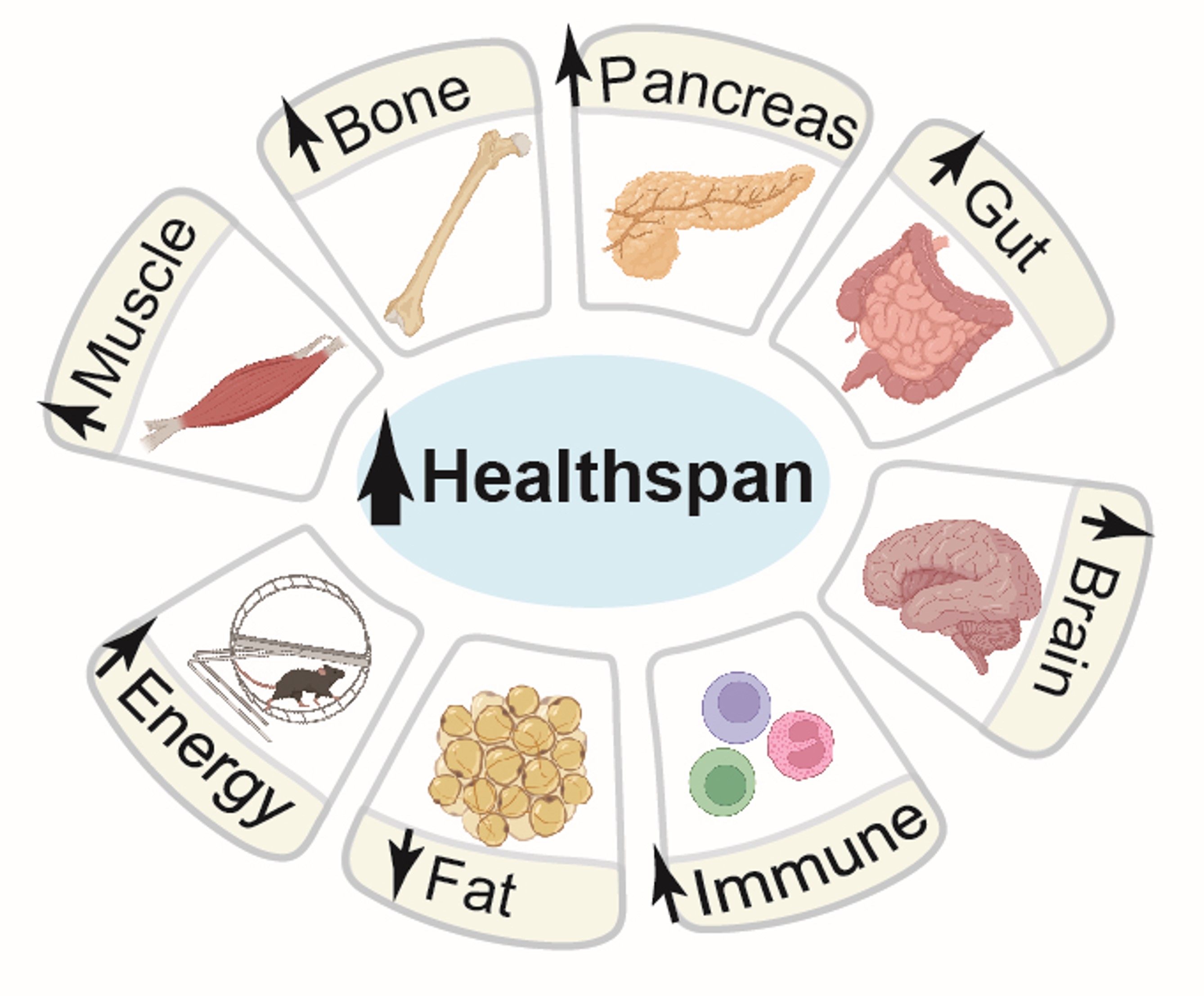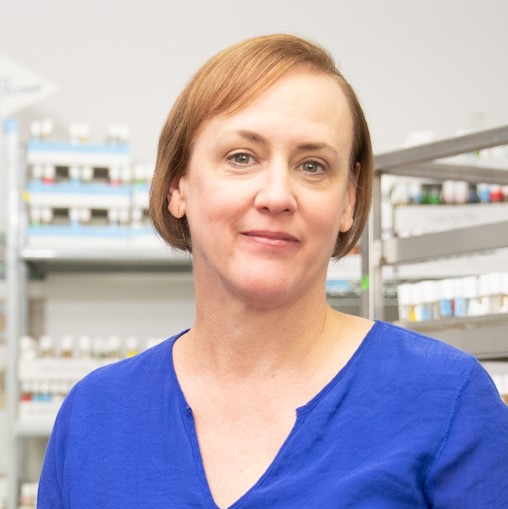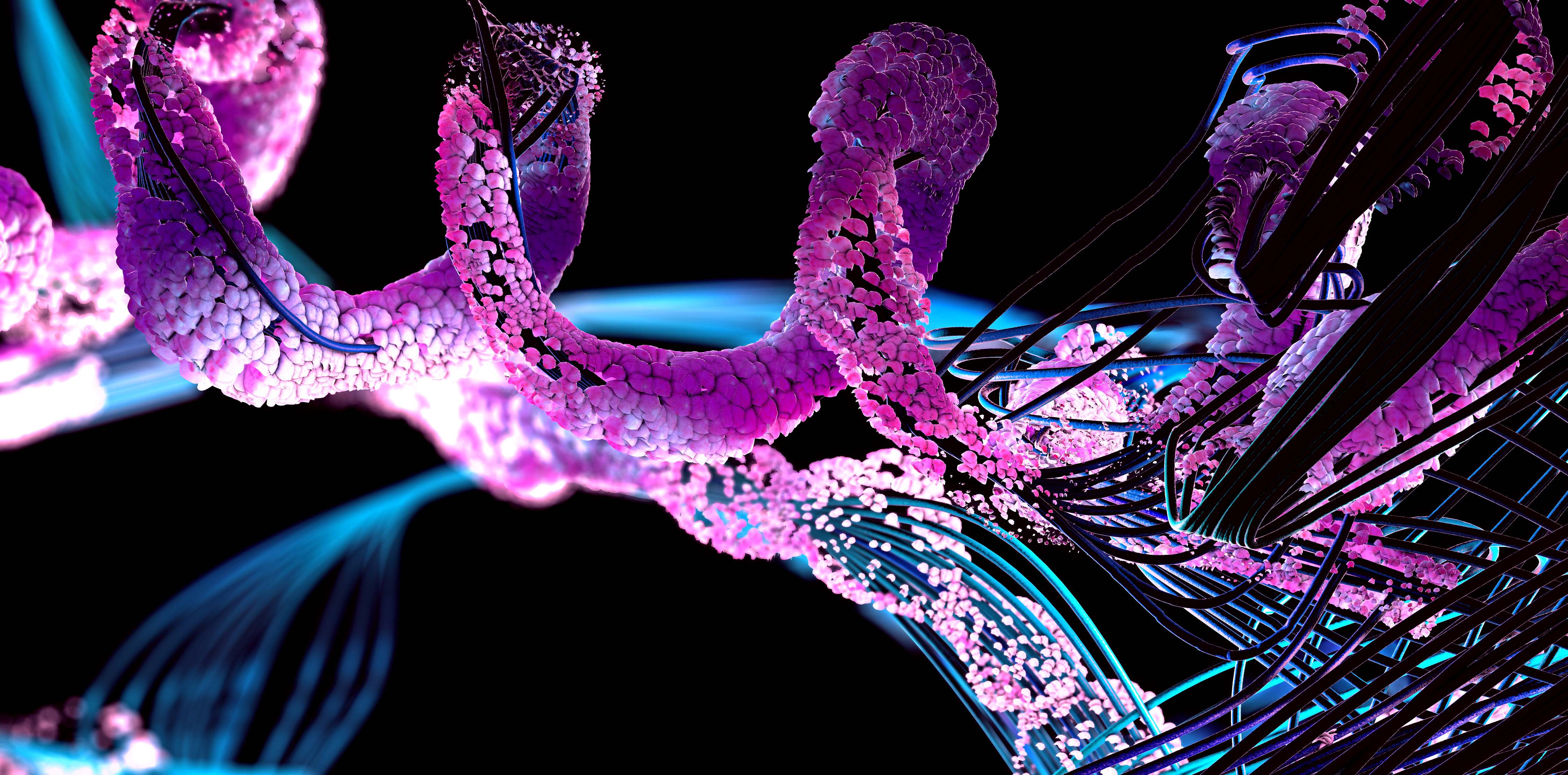by Buck Institute
June 8, 2023 . BLOG
Taurine supplementation extends healthy lifespan in several species
Taurine is a naturally occurring metabolite known to support immune health and nervous system function. It’s one of the most abundant amino acids found in humans and other complex animals. In humans, lower taurine is linked to higher risks for type 2 diabetes, hypertension, obesity, inflammation and liver disease. Blood concentrations of taurine decline with age in mice, monkeys and human beings, but it’s been unclear whether the decline is a consequence of aging or a driver of the aging process. A June 8th study published in Science changed all that, at least in the species tested, given that taurine supplementation increased lifespan in worms and mice and extended healthspan in mice and monkeys. The study suggests that restoring the concentration of taurine to “youthful” levels could be an anti-aging intervention in humans. Not surprisingly, study authors are calling for randomized clinical trials of the supplement to evaluate its impact on human aging.

Mechanistically, taurine supplementation effected several hallmarks of aging in the study. It reduced cellular senescence, protected against telomerase deficiency, suppressed mitochondrial dysfunction, and decreased both DNA damage and inflammation. Middle-aged mice that were fed taurine showed improved functioning of bone, muscle, pancreas, brain, fat, gut and immune system. The healthspan effects were also observed in monkeys.
Much of the work involving nematode worms was done at the Buck in the Andersen and Lithgow labs. Buck professor Gordon Lithgow, who is among the 56 researchers contributing to the study, describes the results as astounding.  “How is it that we see taurine’s anti-aging effects in worms, then in mice and then in primates in both genders. This is such a strong message about the effects of naturally occurring metabolites and what can happen when they are restored to youthful levels,” he says. “It gives me hope that simple and safe interventions can have a big impact on aging.” Lithgow cited a 2020 study from his lab that showed another naturally occurring metabolite, alpha-ketoglutarate, increased lifespan and dramatically compressed late-life morbidity in mice. The supplement is commonly used by bodybuilders to bulk up muscle mass.
“How is it that we see taurine’s anti-aging effects in worms, then in mice and then in primates in both genders. This is such a strong message about the effects of naturally occurring metabolites and what can happen when they are restored to youthful levels,” he says. “It gives me hope that simple and safe interventions can have a big impact on aging.” Lithgow cited a 2020 study from his lab that showed another naturally occurring metabolite, alpha-ketoglutarate, increased lifespan and dramatically compressed late-life morbidity in mice. The supplement is commonly used by bodybuilders to bulk up muscle mass.
 “Traditionally, science is in silos,” says Buck professor Julie Andersen, another co-author who counts this paper as a huge win for the interdisciplinary field of geroscience. “For example, bone health is included in this paper. For the most part, people interested in bone health don’t talk to people studying other aspects of aging. This study breaks down the walls between yeast, worms, mice and primates,” she says. “It’s a spectacular example of how you can make breakthroughs by being interdisciplinary.”
“Traditionally, science is in silos,” says Buck professor Julie Andersen, another co-author who counts this paper as a huge win for the interdisciplinary field of geroscience. “For example, bone health is included in this paper. For the most part, people interested in bone health don’t talk to people studying other aspects of aging. This study breaks down the walls between yeast, worms, mice and primates,” she says. “It’s a spectacular example of how you can make breakthroughs by being interdisciplinary.”
 Buck research scientist Manish Chamoli, PhD, spearheaded much of the worm and neuronal cell work cited in the paper, becoming a 2nd author of the study. He says it looks like taurine may be acting, in part, by increasing Mitochondrial Complex 1 activity, not a surprise when considering many of the hallmarks of aging involve mitochondrial dysfunction. Chamoli will be doing further research in worms to identify taurine’s specific mechanisms of action. “This paper is so strong because the results have been reproduced in many labs; there were 34 research organizations named in the paper,” he said, listing a team that includes scientists from Columbia University in New York City, the University of Washington in Seattle and Boston’s Harvard and MIT in the U.S., along with organizations in New Delhi, India, Australia, Germany, Italy, France, United Kingdom, Singapore and Turkey. “I’m hoping that this paper sets an example for future studies. Multi-disciplinary research in multiple species with reproducible results elevates the work from ‘interesting’ to ‘must read’; it is how the field can make huge leaps forward,” he says.
Buck research scientist Manish Chamoli, PhD, spearheaded much of the worm and neuronal cell work cited in the paper, becoming a 2nd author of the study. He says it looks like taurine may be acting, in part, by increasing Mitochondrial Complex 1 activity, not a surprise when considering many of the hallmarks of aging involve mitochondrial dysfunction. Chamoli will be doing further research in worms to identify taurine’s specific mechanisms of action. “This paper is so strong because the results have been reproduced in many labs; there were 34 research organizations named in the paper,” he said, listing a team that includes scientists from Columbia University in New York City, the University of Washington in Seattle and Boston’s Harvard and MIT in the U.S., along with organizations in New Delhi, India, Australia, Germany, Italy, France, United Kingdom, Singapore and Turkey. “I’m hoping that this paper sets an example for future studies. Multi-disciplinary research in multiple species with reproducible results elevates the work from ‘interesting’ to ‘must read’; it is how the field can make huge leaps forward,” he says.
Other Buck scientists who collaborated on the study include Anna Foulger, Shankar Chinta and Anand Rane. Parminder Singh, who is now a postdoctoral fellow in the Kapahi lab, is a first author of the paper. He worked on the project while getting his PhD from the National Institute of Immunology in New Delhi, India.
When calling for double-blind, placebo-controlled clinical trials of taurine, the study’s main authors cautioned the public not to self-dose with the supplement, pointing out that there are other ways to boost the naturally occurring metabolite. The study showed that a bout of exercise increased the concentrations of taurine metabolites in blood which might partially explain the anti-aging effects of exercise. Taurine can also be obtained through the diet; the highest amounts of taurine can be obtained from shellfish, especially scallops, mussels and clams. High amounts of taurine can also be found in the dark meat of turkey and chicken.

SHARE